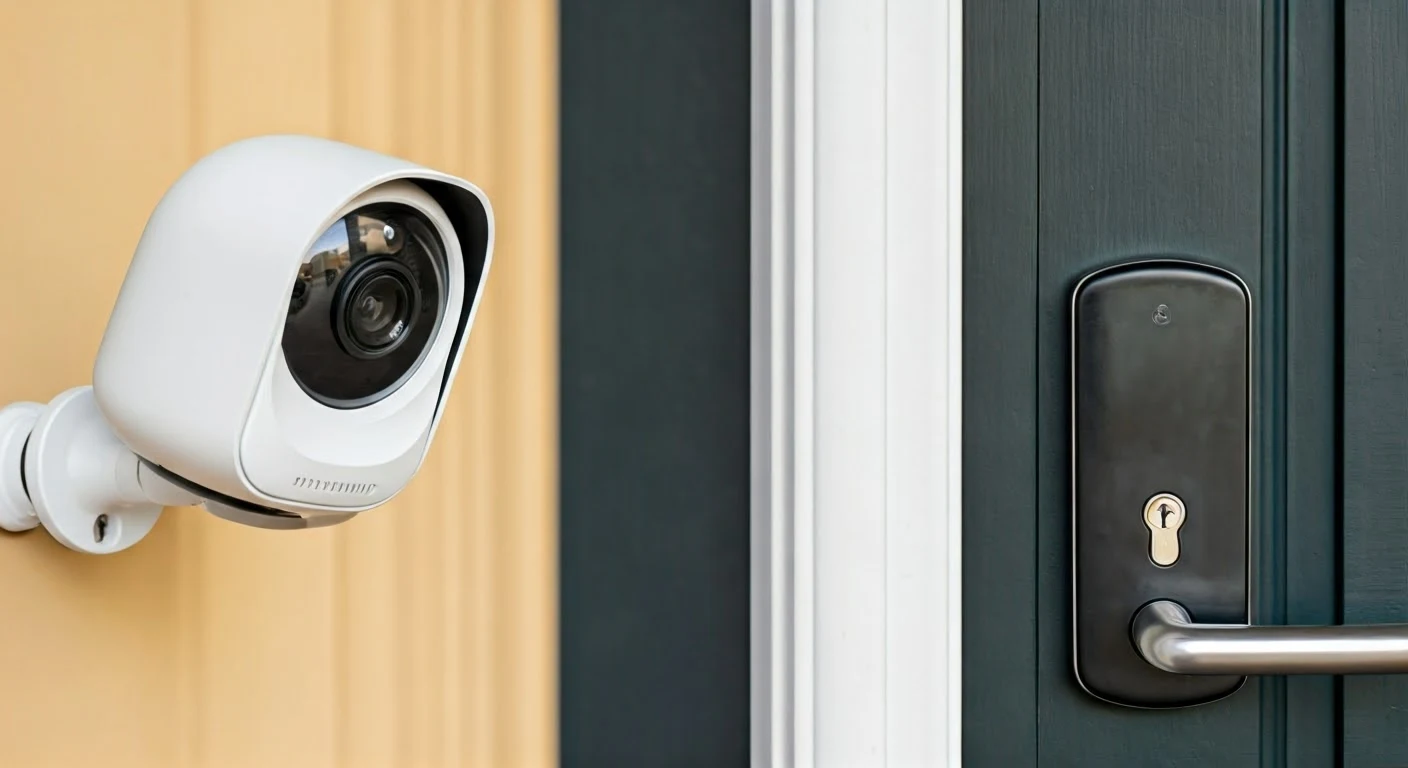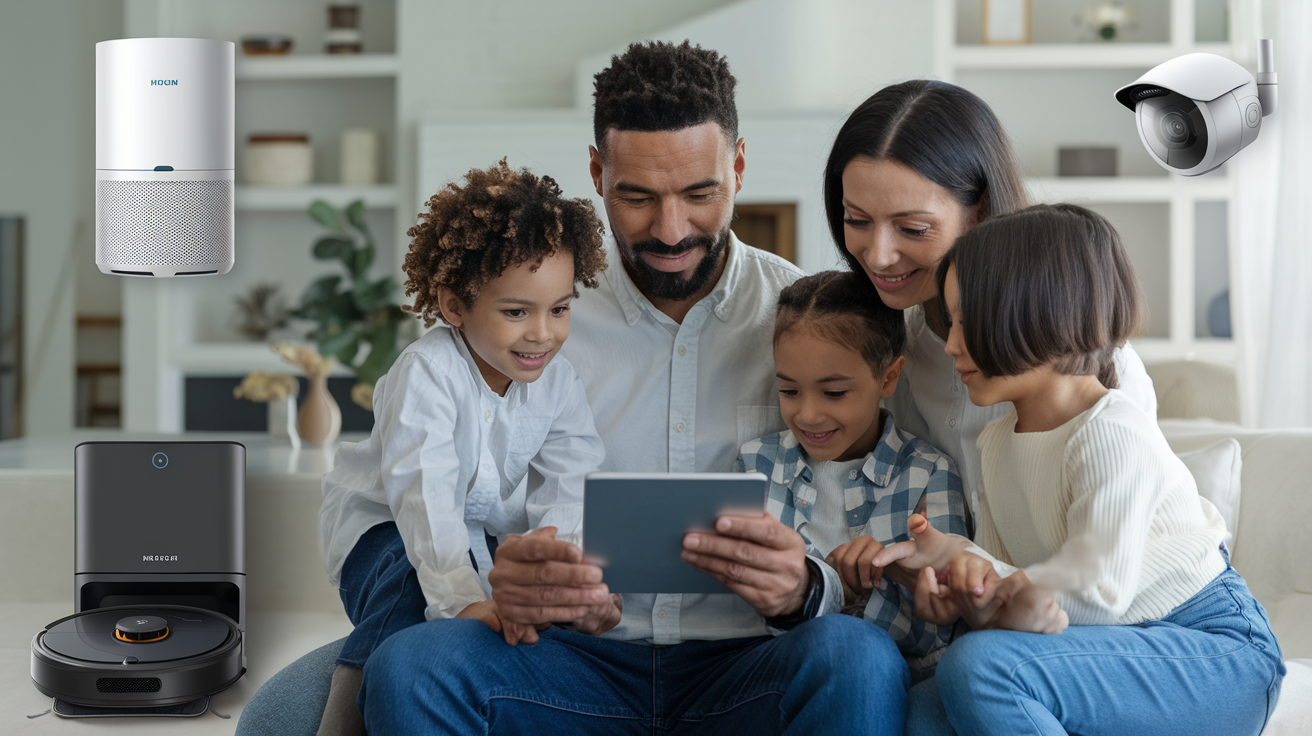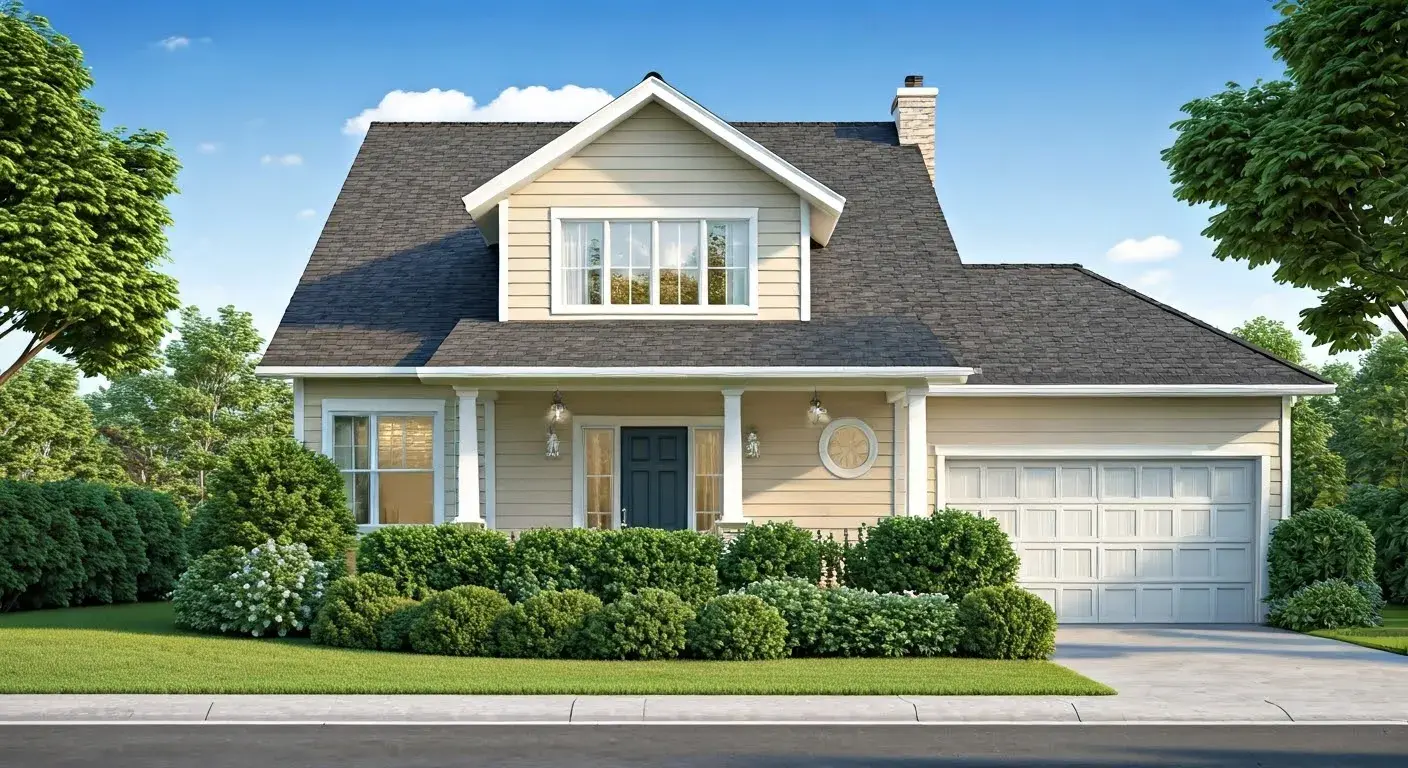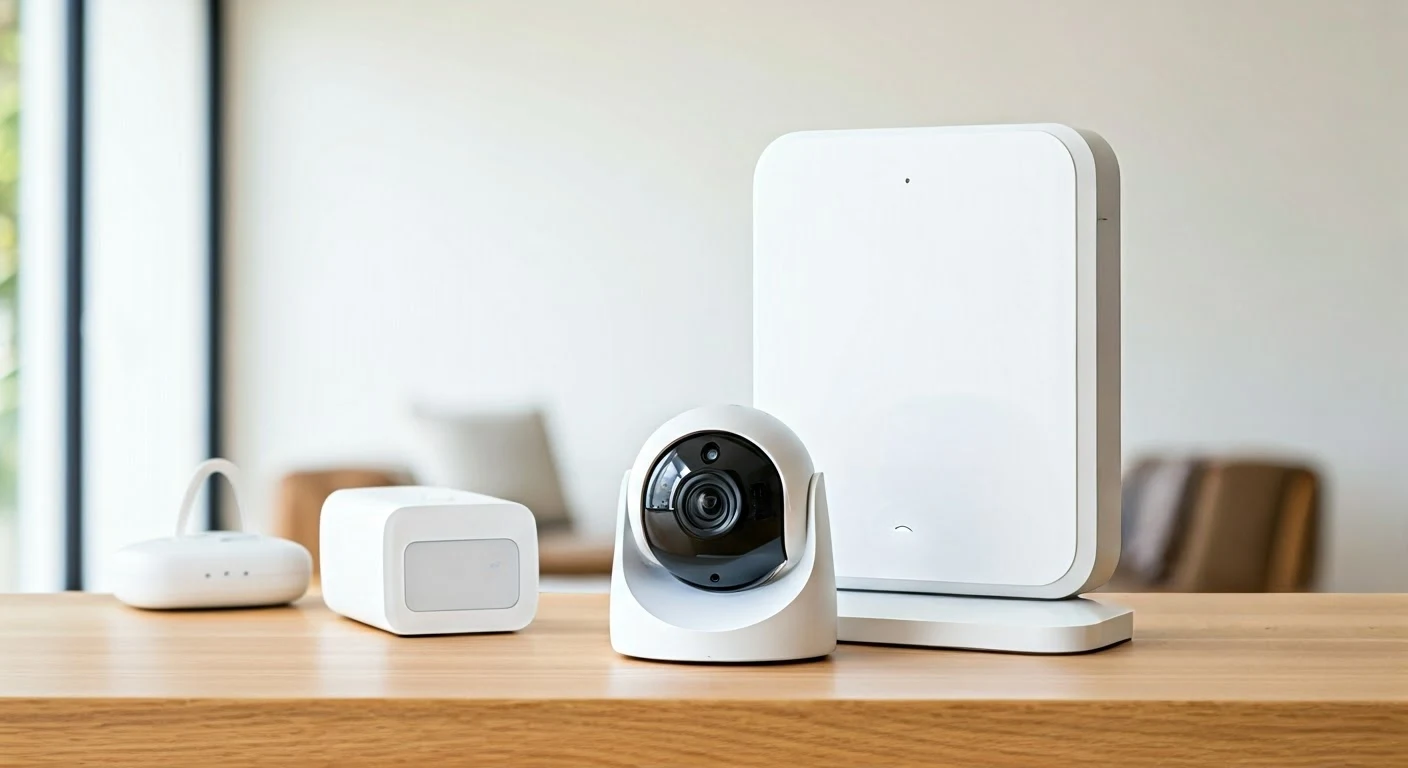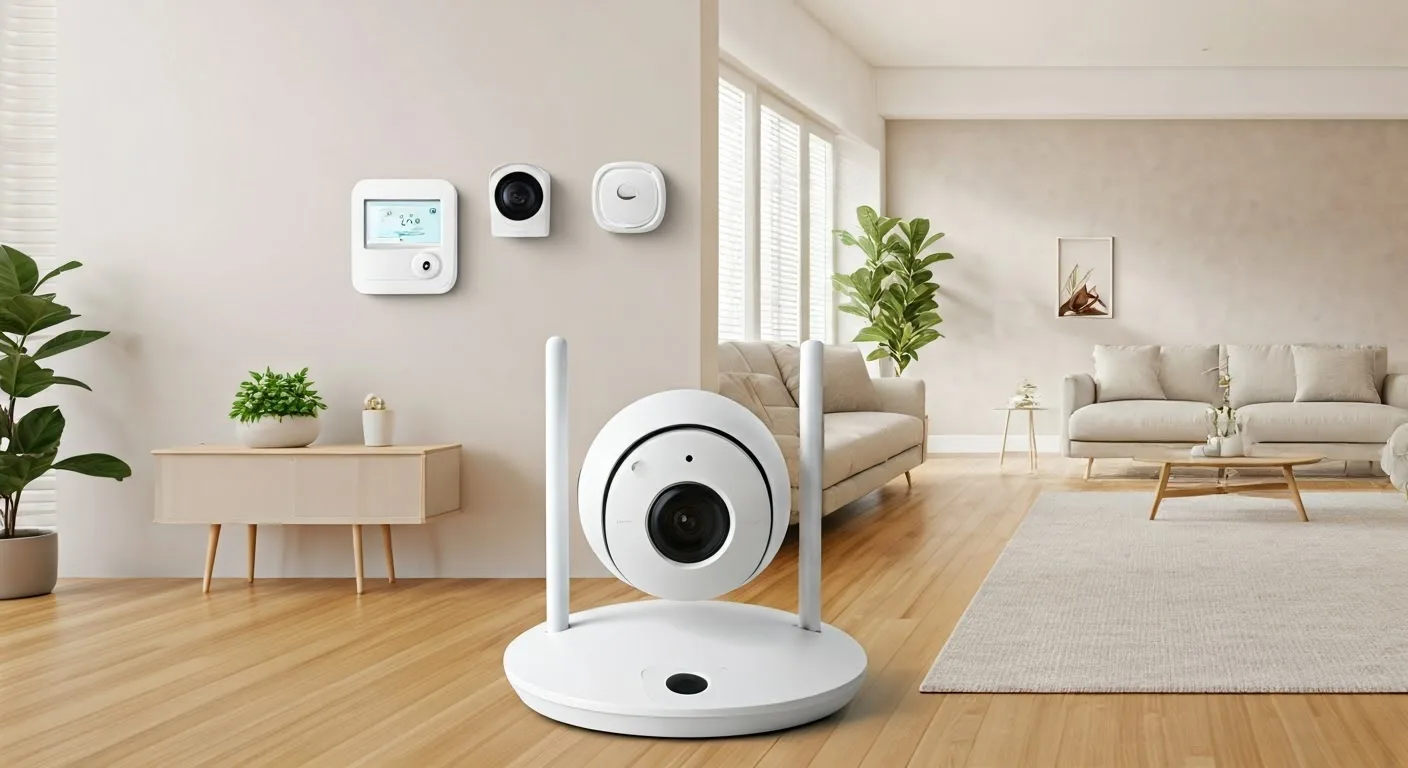A smart home is more than just a regular house. It uses the latest technology to make our lives easier. Picture a home where an internet connection lets you control things like lights or temperature, no matter where you are. This is what a smart home is all about. It mixes convenience, efficiency, and comfort for a truly special living experience.
Understanding Smart Home Basics
A smart home uses connected devices and systems to make life easier. You can change the thermostat, switch off lights, or even heat the oven with just a few taps on your smartphone. This connection works well because of a strong internet connection, creating a smart home ecosystem.
The real magic happens when these devices talk to each other and work together. For example, a smart home system can learn what you like and automatically change the lighting and temperature as you move around your house. This kind of smart automation makes things more comfortable and helps save energy consumption.
Defining a Smart Home in Today’s World
A smart home, also known as a connected home, uses the internet and home automation to improve how we live today. It goes beyond what a normal house offers by adding technology to make our living space more responsive and in tune with our needs.
At the heart of a smart home is how well different devices and appliances work together. This network includes smart thermostats, lights, security cameras, and other appliances. All these smart devices connect to create a simple way to manage and automate different parts of your home.
You can control your home’s lights to create a cozy atmosphere, change the temperature for comfort, or check your security system. You can do all these things from your smartphone or other connected devices. This ability to connect and control things from afar is what makes a smart home so special.
The Evolution of Home Automation and Smart Technology
The journey of home automation has been impressive. It started with simple remote controls and evolved into smart home systems that can learn our habits. This change shows how people always want more comfort and efficiency in their homes.
In the beginning, home automation relied -on standalone devices that didn’t do much. But as technology got better, we saw the rise of connected devices, leading to smart home systems. This shift changed everything, allowing us to control and automate many things in our homes from one place.
Now, there is a focus not just on comfort but also on being sustainable. Modern smart home systems aim to be energy-efficient. They promote using natural resources wisely. This eco-friendly approach fits well with the growing awareness of protecting our environment.
Core Technologies Behind Smart Homes
A smart home works smoothly because of different technologies that come together. These technologies help create a connected and smart living space. The main player in this change is the Internet of Things (IoT). This network of connected devices is essential for a smart home. It allows the different parts to talk and share information easily.
Plus, communication methods, like Z-Wave and Zigbee, are very important. They help different smart devices to work well together. These methods give devices a common way to talk to each other. This helps build a strong and dependable smart home setup.
The Role of the Internet of Things (IoT) in Smart Homes
The Internet of Things (IoT) is very important for smart homes. It connects devices so you can automate tasks and control things from afar. With IoT technology, smart home systems include security measures and are energy efficient. Devices like smart plugs and cameras work through an internet connection. This helps in daily tasks and gives you peace of mind. IoT devices gather data and allow voice commands. They make living at home easier and more connected. This network also makes energy use better, improves security, and makes daily life simpler.
Understanding Z-Wave and Zigbee Protocols
In smart homes, communication is very important. Wireless protocols like Z-Wave and Zigbee help smart devices talk to each other easily. These protocols use low-energy radio waves. This keeps your devices connected without using too much battery power.
Z-Wave is strong and stable. It's great for bigger homes because of its good mesh networking. Zigbee, on the other hand, uses even less power and is popular in the smart home market.
Both Z-Wave and Zigbee need a central hub. This hub controls and manages the devices in your smart home system. It works like the brain of your system, sending commands and making sure everything works well together.
Setting Up Your Smart Home
Starting your smart home journey means setting up a solid base. The first step is to have a good and stable internet connection. This connection is vital for your connected home. It gives the support and speed needed for smooth communication between your smart devices.
Choosing a smart home hub is also very important. This hub acts as the main control center for your smart home. You can think of it like a conductor leading an orchestra, managing all your smart devices.
Essential Components for a Smart Home System
A smart home is built on the smooth connection of important parts that work together to give you a great experience. At the center of this system is the smart home hub. This hub connects and controls all your smart devices. It is like the brain for your smart home, making sure that everything talks to each other well.
Along with the hub are many smart devices that help automate and improve different areas of your home. You have smart thermostats that control the temperature and smart lighting systems that light up your home. These devices provide great convenience, efficiency, and control over your living space.
No more searching for remote controls! With a smart home system, you can easily manage your devices using special smartphone apps. These apps are easy to use. They let you change settings, set schedules, and check what your devices are doing. This gives you a simple and clear way to work with your connected home.
Step-by-Step Guide to Integrating Smart Devices
Integrating smart devices into your home is easy and can really improve your daily life. Here’s a simple guide to help you get started:
1. Assess Your Needs: Figure out which parts of your home you want to automate. You can start with basic things like controlling lights and appliances. You can also get more advanced devices, like a smart thermostat for temperature control.
2. Choose a Platform: Pick a smart home platform that works for you. Options include Amazon Alexa, Google Assistant, or Apple HomeKit. This platform will be your main way to control your devices.
3. Install and Connect: Carefully follow the instructions from the manufacturer to set up your devices. Make sure they are connected to your home's Wi-Fi. This will help them work well.
4. Personalize and Automate: Change the device settings and schedules to fit your needs. For example, you could set up smart lights to turn on when the sun sets. You can also program your smart thermostat to change the temperature based on your daily routine.
5. Explore Voice Control (Optional): If you want, you can add voice assistants like Amazon Alexa or Google Assistant. This will let you control your devices using simple voice commands.
Innovative Features of Smart Homes
Smart homes are more than just simple automation now. They offer many new features that change how we live today. Picture a home that knows what you need and reacts to it. With tools like presence detection, your smart home can see when you get home. It can then adjust the lights and temperature just the way you like it.
Think about controlling your appliances by speaking. Smart speakers with voice assistants like Amazon Alexa or Google Assistant make this easy. You can use voice commands to manage your smart home system without any hassle.
How Smart Appliances Enhance Your Living Experience
Smart appliances are changing how we run our homes. They make our daily lives easier and more efficient. For example, picture starting your morning with fresh coffee from your smart coffee maker. You can set it to brew at your favorite time.
These smart appliances can turn boring chores into easy tasks. Smart washing machines can adjust wash cycles for the size of the load and the detergent you use. Smart refrigerators can help you keep track of groceries, make shopping lists, and even suggest recipes using what you have.
Also, smart appliances help you save energy at home. Smart thermostats and lights can learn your habits. They can change settings to save energy, which can lower your bills and help the environment.
The Advantages of Smart Lighting and Heating Systems
Smart lighting and heating systems are changing how we light and heat our homes. They bring together convenience, energy savings, and a nice atmosphere. For example, you can change the lights in your living room for the perfect mood during a movie night. With smart bulbs, you can change the brightness and color, or set timers for your lights to turn on and off by themselves.
Smart lighting systems not only look good but also help save energy. Smart bulbs use much less power than regular bulbs. This helps lower your energy bills and reduces your carbon footprint.
Smart heating systems come with smart thermostats that make temperature control easier. These thermostats learn how you like to be heated and change the temperature during the day. This keeps your space comfortable while saving energy.
Smart Home Security Solutions
In a time when security worries are growing, smart homes are here to help. They provide complete safety solutions that can give you peace of mind. Smart security systems help keep away possible intruders. They also let homeowners monitor their houses from afar for better safety.
Just picture getting a message on your smartphone if your front door is unlocked or if there's something strange happening at home. These systems often combine security cameras, smart locks, and sensors. Together, they create a strong security network. You can give access to visitors remotely and check your property in real time. Smart home security solutions give you control over your home’s safety, no matter where you are.
The Importance of Smart Locks and Security Cameras
Smart locks and security cameras are now important parts of home security. They provide a strong mix of convenience and peace of mind. Smart locks get rid of the need for traditional keys. You can lock and unlock your doors from anywhere using your smartphone. You can also give temporary access to guests, watch entry and exit activity, and keep your home safe.
Security cameras keep an eye on your property. They help stop intruders and can provide proof if something happens. With features like motion detection and real-time alerts, you stay updated about any strange activity.
When you invest in smart locks and security cameras, you help protect your loved ones and valuables. The ability to check on your home from afar and receive quick alerts about strange activity gives you unmatched peace of mind.
Implementing a Comprehensive Smart Home Security System
In today’s world, making a good home security plan often means adding smart technologies to regular security systems. Modern home security is about more than just locks and alarms. It uses connected devices and smart automation to build a strong defense against possible threats.
Traditional security systems, like alarm systems, are still important, but they work better when combined with smart home technology. Adding smart locks, security cameras, and motion sensors to your system offers more protection that acts quickly.
Picture your security system telling you right away if it sees something strange on your cameras. This lets you check what’s happening and react, even if you are not home. This smart setup gives homeowners awareness in real-time and helps them respond fast.
The Future of Smart Homes
The world of smart homes is always changing. This change is driven by quick tech advancements and a rising wish for better convenience, efficiency, and customization. Looking ahead, it's clear that there is almost no limit to what can be done in smart homes.
New technologies like Artificial Intelligence (AI) and Machine Learning are ready to change how smart homes work. We can expect homes that learn how we act, predict what we need, and easily adjust to our lives.
Emerging Trends in Home Automation
The home automation world is changing fast. This change is driven by new technology and what users want. One big trend now is focusing on saving energy and being eco-friendly. As people worry more about climate change, smart home products that help save energy are becoming popular.
Another important trend is the smart grid. This system helps homeowners watch and control their energy use better. It can lower costs and encourage responsible energy habits.
Additionally, voice control is quickly becoming the favorite way to use home automation. Voice assistants like Amazon Alexa and Google Assistant are more and more in smart home devices. This allows people to easily manage their homes using simple voice commands.
How AI and Machine Learning are Transforming Smart Homes
Artificial Intelligence (AI) and Machine Learning (ML) are changing how smart homes work. They help make our homes more personal and automated in a way that we could not imagine before. These technologies let smart home systems learn what we like, predict what we need, and change to fit our preferences. This creates a home that is smart and can respond to us.
Data collection is very important for AI and ML to work well in smart homes. When it collects a lot of data from sensors and devices, AI algorithms can spot patterns in our daily activities and preferences. They can even guess what we might need next.
For instance, a smart home system that uses AI can look at how you used energy in the past. It can then take that data to improve heating and cooling in your home. This way, it ensures energy efficiency and also makes your life easier.
Conclusion
In conclusion, having a smart home makes life easier and more efficient. It changes how we live and interact with our spaces. When you use IoT, Z-Wave, Zigbee systems, and AI, it allows for smooth automation and better security. Smart homes show us what the future can be like with connected living, where daily tasks are easier and the energy consumption is lower. As you start to change your home into a smart home, remember each device brings you closer to a smarter and greener lifestyle. Explore the benefits of a smart home today and discover new possibilities.
